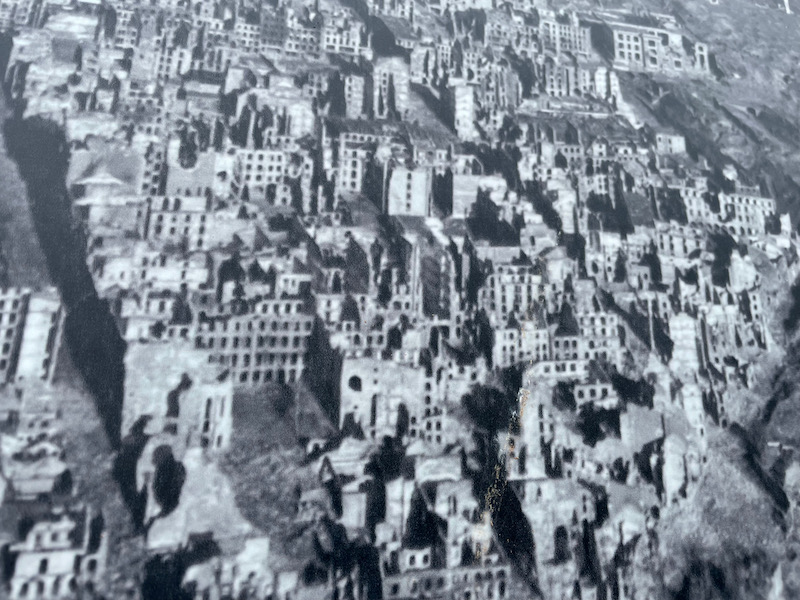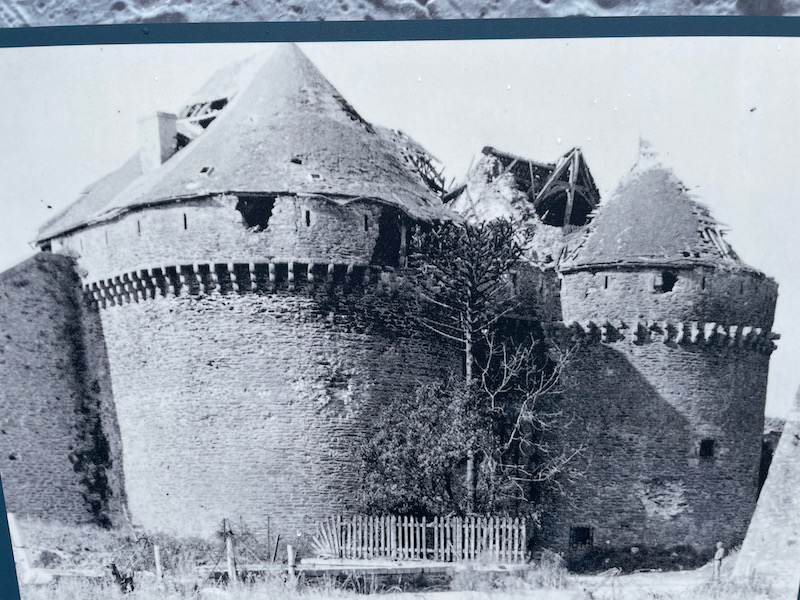Our Blog - Brest, France
We didn't think there was much to see in Brest, even though it is the largest city in Finistère and the second most important military port (after Toulon). There was probably quite a bit to see prior to World War II, but the city was largely destroyed during the bombings in 1944. In the Middle Ages, it had an important castle here (which you will see in my pictures) and it has been able to reinvent itself, being labeled a City of Art and History. It is also an important university town, including a medical school.
A bit on the bombings during World War II ... German troops entered Brest in June of 1940 and the French navy and merchant navies quickly evacuated the port, destroying bridges, several buildings, and four submarines under repair. The Germans then established a submarine base here, which made it a target of Allied bombings. The first Allied bombings of the city began in 1941 and lasted until the city was occupied in September, 1944. There was a total of 165 bombings in the city. And the devastation was almost complete ... of the 16,500 buildings that existed before the war, only 200 were still standing, including only 4 in the city center.
A bit of trivia: Brest is a sister-city of Denver, Colorado, and this "twinning" is one of the oldest in France. It was officially signed in 1959, but relations between the two cities began as early as 1948 with Denver's help in reconstruction after the war.
Tour Tanguy is a 14th century tower that sits on a rocky hill above the river. Today it houses a museum that shows the history of Brest and models that show what Brest looked like prior to World War II.
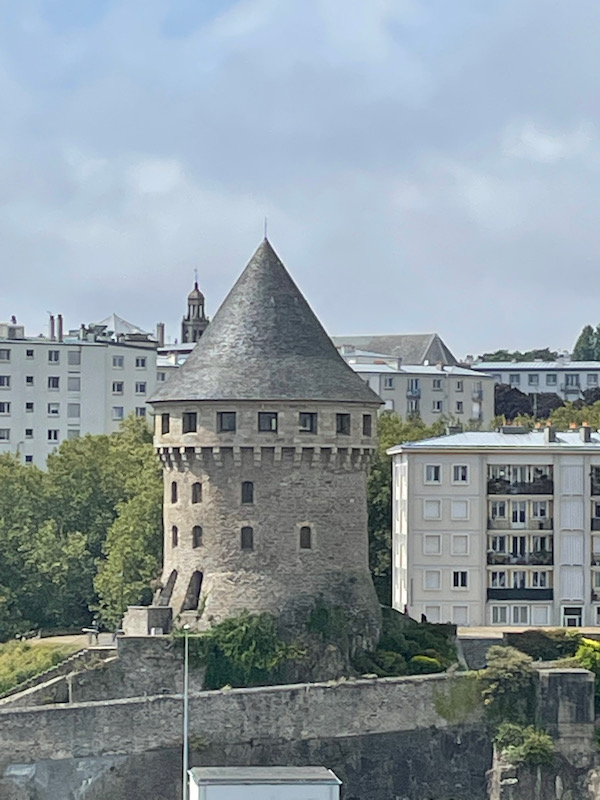
Pont de Recouvrance was built in 1954 and, for awhile, was the largest "lift bridge" in Europe. Unlike a traditional drawbridge, a lift bridge generally has an entire section is movable and can be lifted horizontally. The section that can be lifted, to allow tall ships to pass under, is almost 300 feet long! If you want to see it raised, you can look at this Wikipedia picture .. it is pretty impressive to see the roadway up at the top of the pillars.
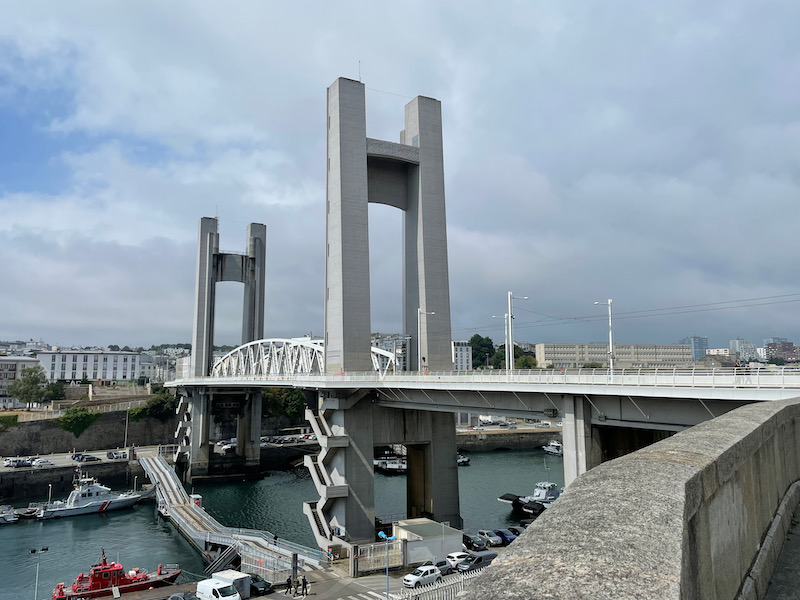
The history of the Brest Castle goes all the way back to the 3rd century when the Romans erected a camp for a garrison of the legion of the Oismiaque Moors. You can still find a few remnants of this enclosure, built according to the techniques of the 3rd and 4th centuries with alternating rows of bricks and courses of rubble, bound by lime mortar. There are several legends which mention a castle in Brest. Vauban is called in to create a modern castle to defend the port in the mid 1600's and by 1695, he has transformed it, removing the last Roman towers. The castle becomes a fortified citadel, able to defend from both land and sea.
Coming up to the castle from Place du Chateau, this pointed bastion is called the Sourdéac Bastion and dates from the 16th century. Near here is the Tower of Duchesse Anne, where Anne of Brittany stayed in 1505 during a pilgrimage.
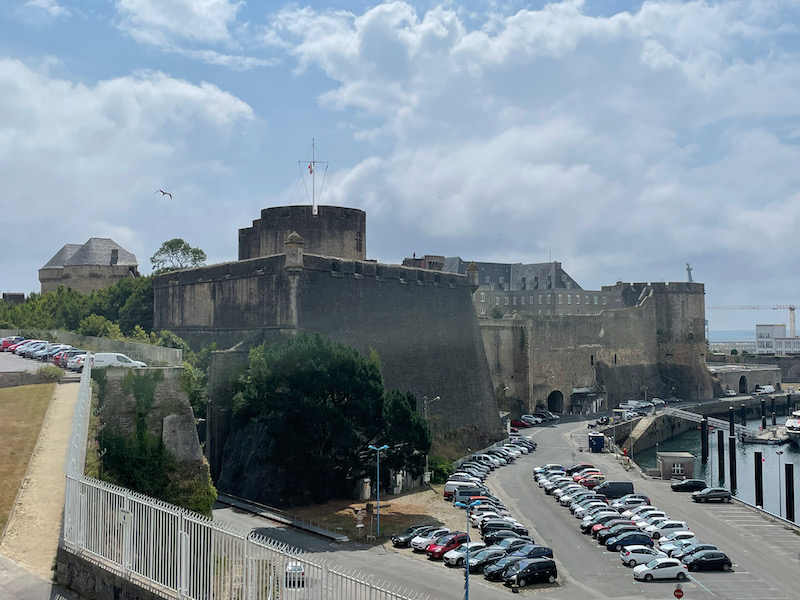
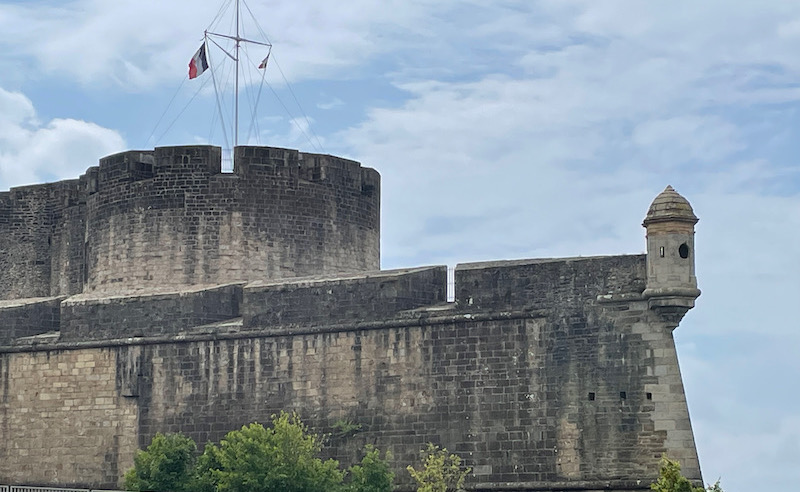
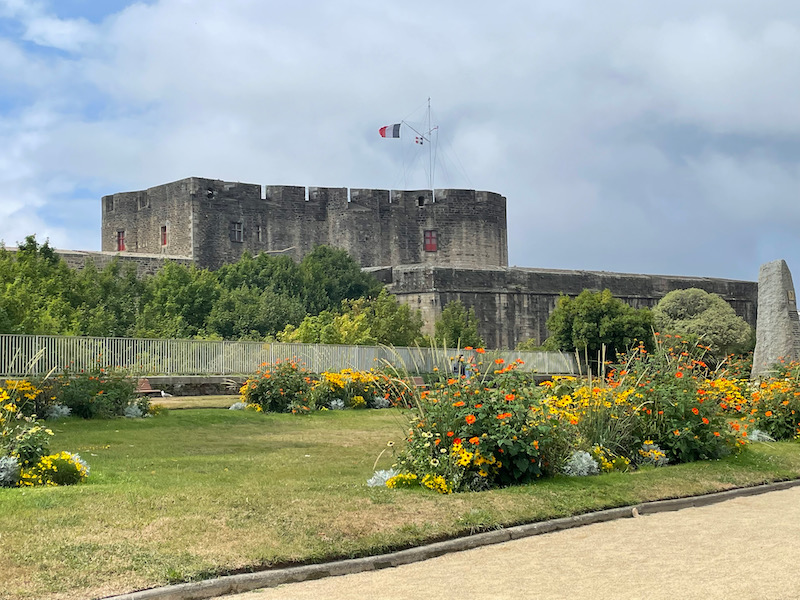
Here we see a curtain wall and the Madeleine tower, which was added in 1424.
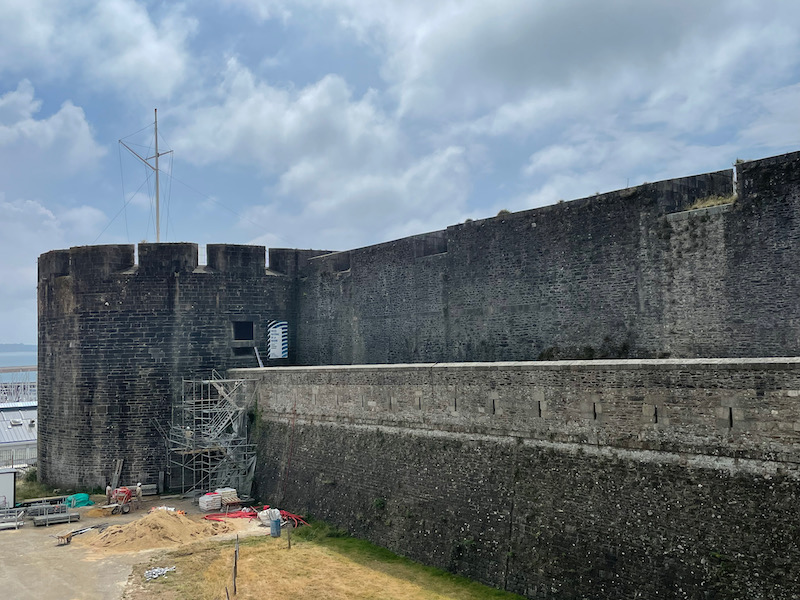
You will see these towers again :-) These are called the Paradise Towers, started in 1464 as a gate-house. They still retain a medieval appearance with pepper pot roofs and machicolation. They were used as a prison during World War II by the Germans when they occupied the citadel.
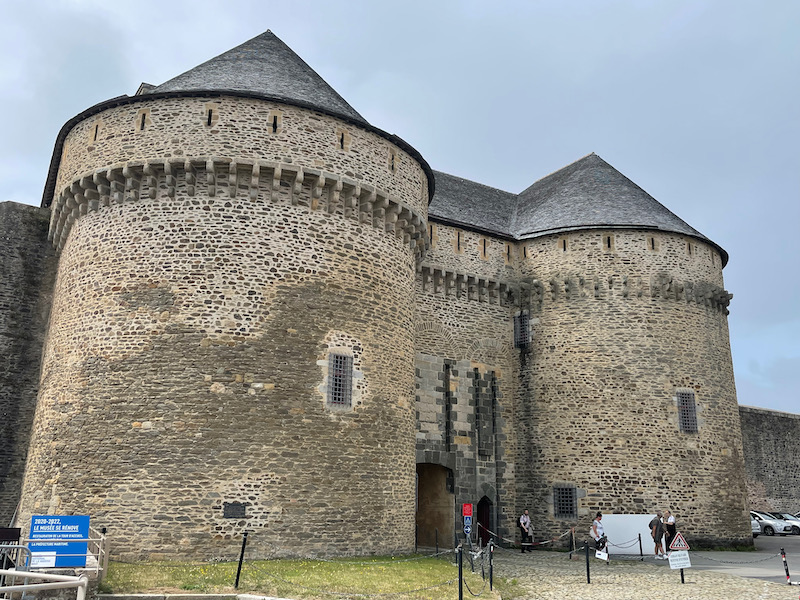
The Monument aux Morts, or Monument to the dead, is an interesting one. Obviously, we see these monuments in almost every city, town, and village in France. But this one, known as the Pink Tower, is an American memorial erected in the 1930's to commemorate the action of the US Navy in Europe during World War I. The choice of Brest for the monument goes back to the fact that the naval fleets of King Louis XVI set sail from Brest to help fight the American Revolution against England. It was destroyed by the Germans during their occupation (in fact, they destroyed it on July 4th, 1941) but was rebuilt identically in 1958. Another point of trivia: the monument AND the garden around it are actually US property who manage the upkeep (but it does not have extraterritoriality status).
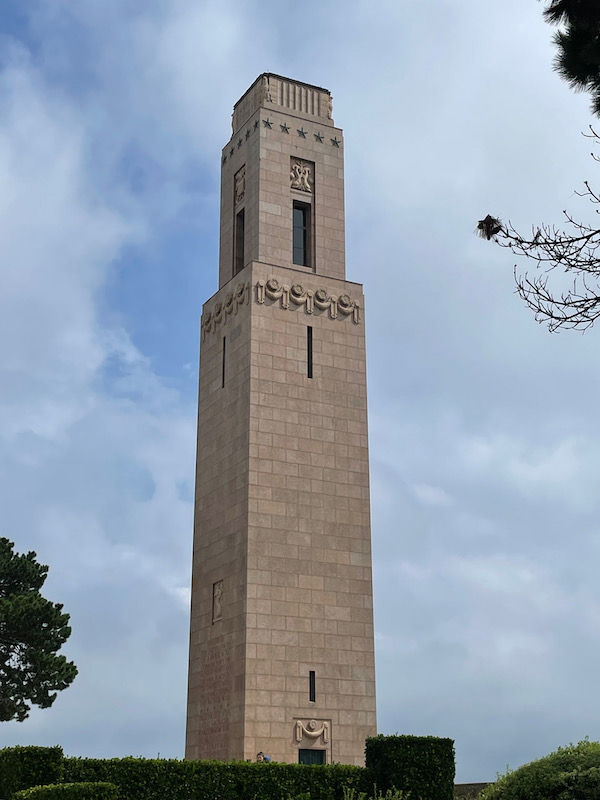
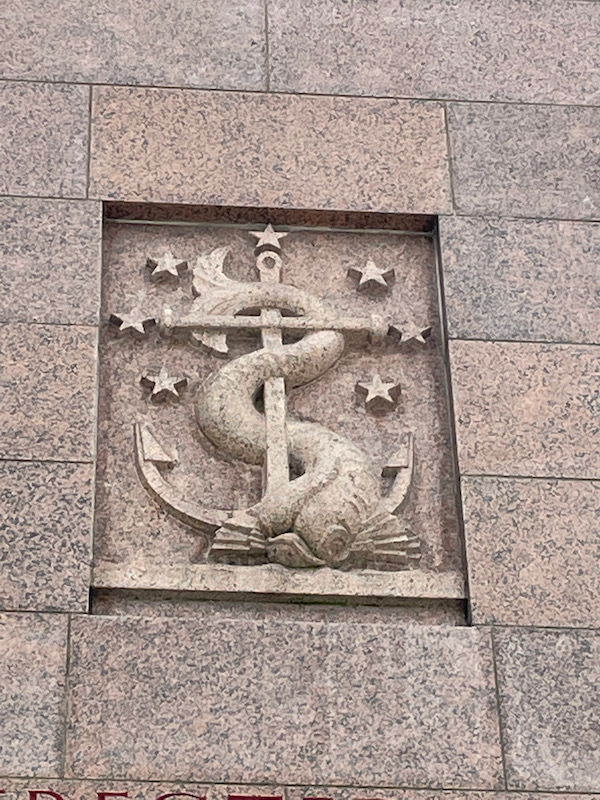
Gate of La Caserne Guépin, this gate is the only remnant of a former 17th century seminary. At the time that it was destroyed by Allied bombings in WWII, it housed the Guépin military barracks.
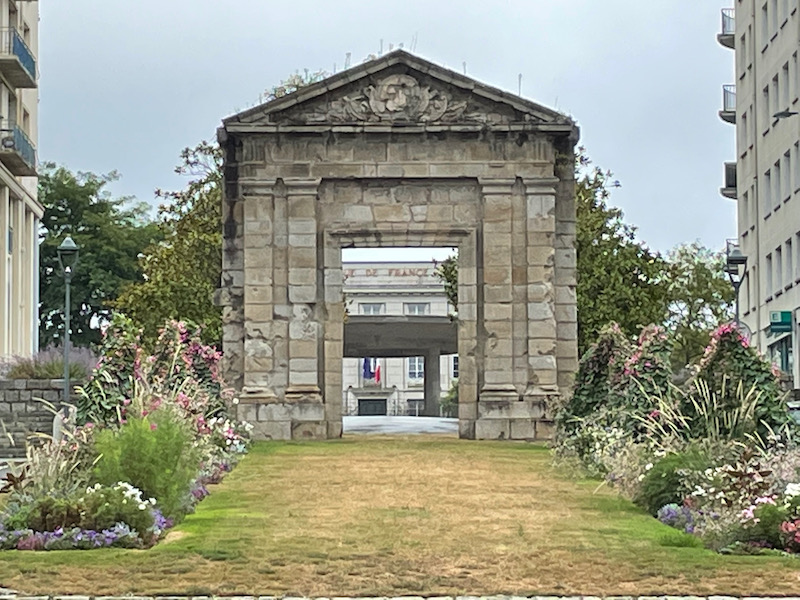
The Église Saint-Louis doesn't really look much like a church other than the tower. The original church here dated from 1686 and, like everything else, was destroyed in the bombings. This church was built between 1953 and 1958 and supposedly there are still ruins of the original church in the basement. You can see that one wall is almost entirely stone, with only a few tiny little windows. But the other side (2nd picture) has these huge almost-floor-to-ceiling windows. This is a symbolism of Evil (the "almost blind" stone wall) versus Good (the glass wall). And as you can imagine, given the design of the building, the tall stained-glass windows are also very modern.
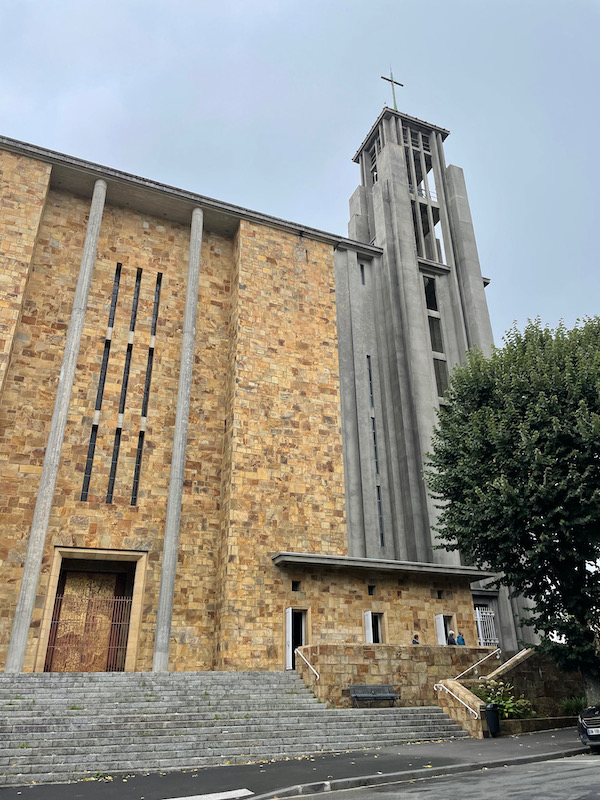
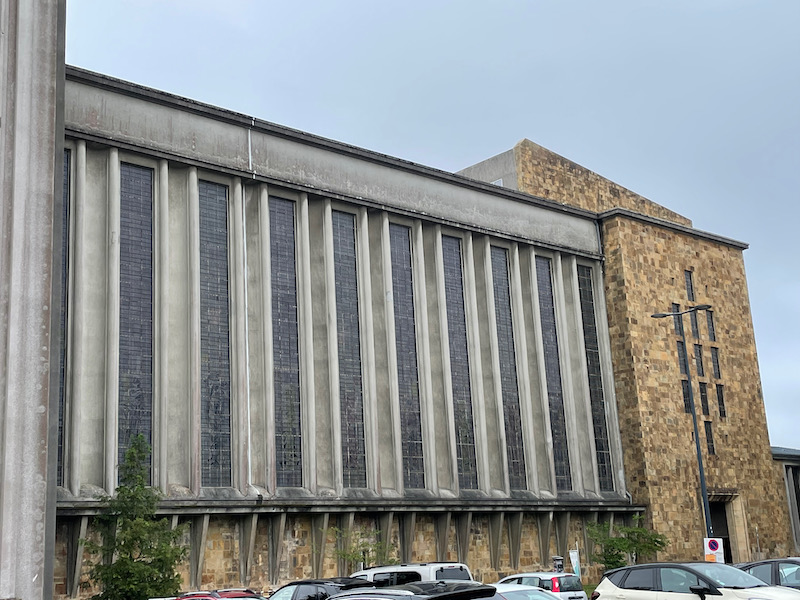
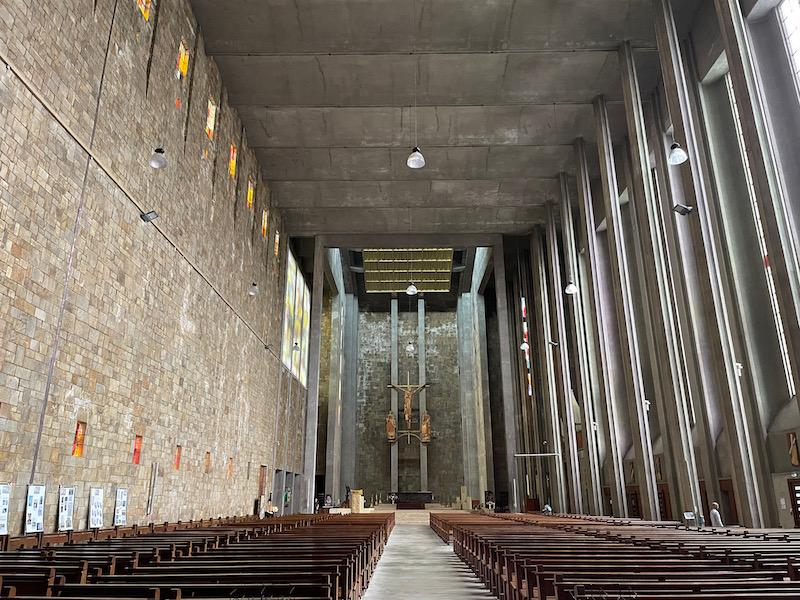
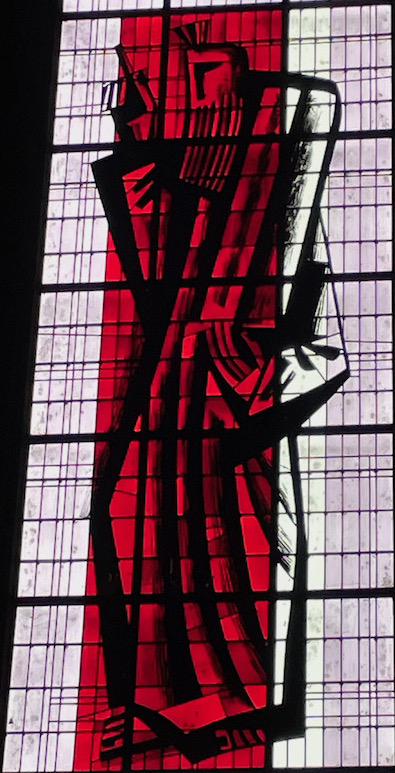
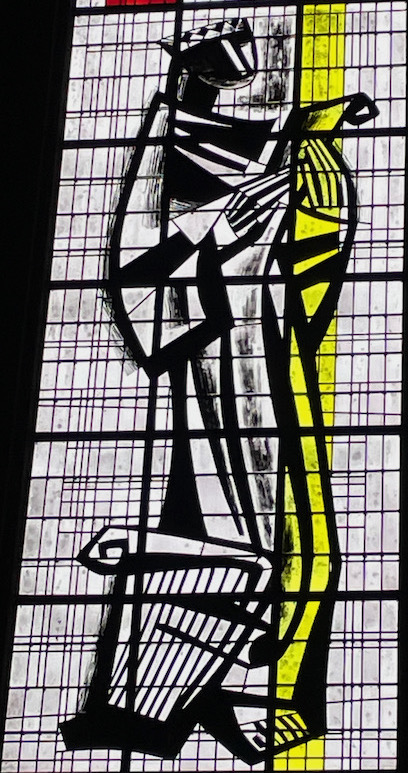
We went through a nice square that had a chronological history of the city of Brest, and there were a couple very interesting pictures. These are after the war, and you can see the devastation of the city, as well as the damage to the chateau itself. And here are the Paradise Towers with a bit of damage, but they are still in pretty good shape compared to the rest of the city.
